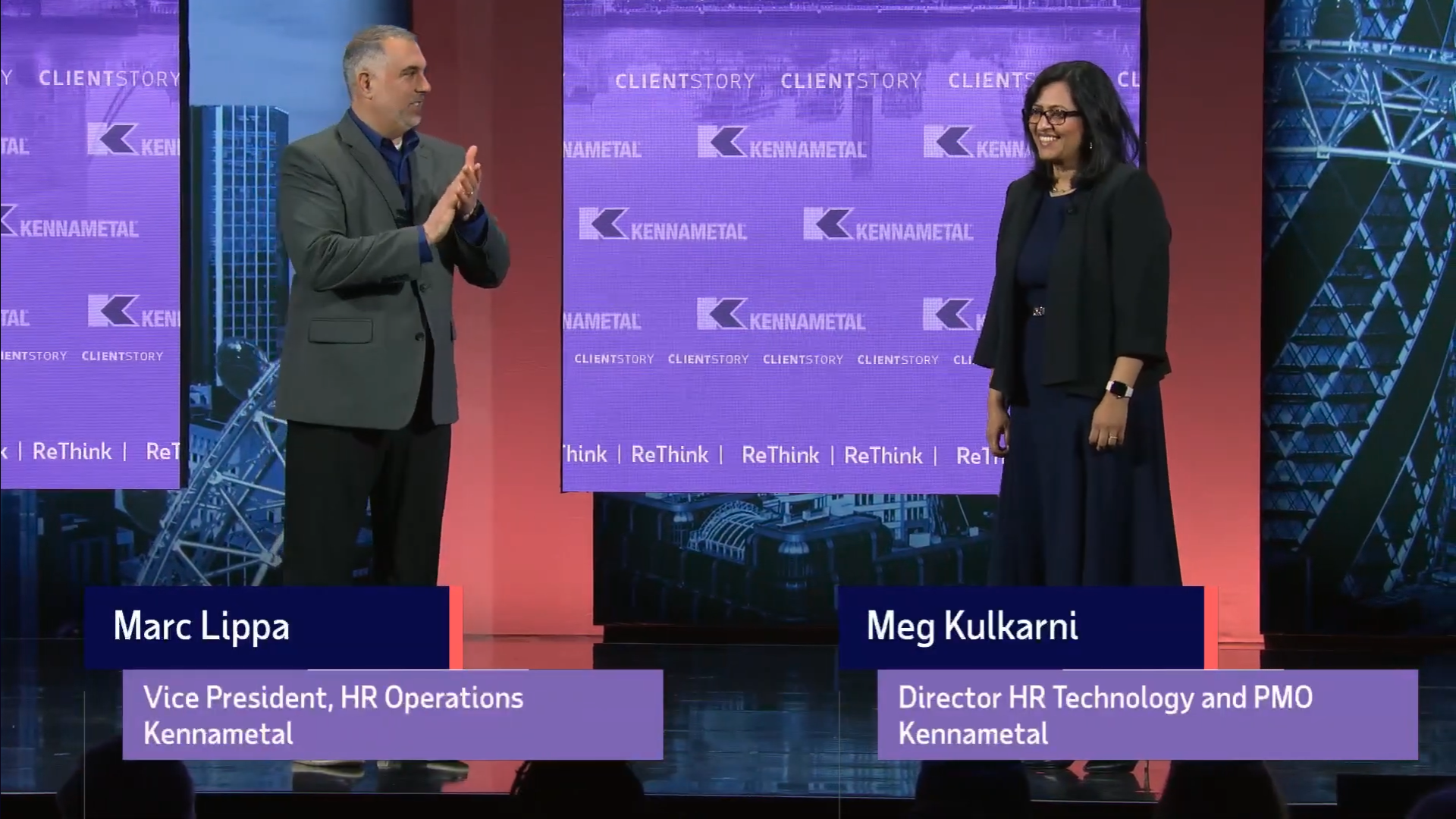When Kennametal began preparing to spearhead a massive HR information system transformation journey in 2015, they knew exactly how they were going to approach the project: By channeling Kennametal’s vision of “transforming how everyday life is built” while preparing for the challenges of tomorrow.
Kennametal is a multinational company that delivers tooling and wear-resistant solutions to make products spanning a wide variety of industries — from electric vehicle battery housings to the materials on the tips of the drill bit currently being used by NASA’s Perseverance rover on Mars.
When Marc Lippa, Vice President of HR Operations, and Meg Kulkarni, Director of HR Technology and PMO, and their teams took stock of the state of Kennametal’s HR system landscape, they knew it was due for a serious makeover. The company used 43 different payroll vendors governed by 47 separate contracts, with many manual and decentralized systems. The employee experience was suffering, among other risks and inefficiencies.
But change does not come easy, and the team soon encountered unexpected challenges from some of their regional teams. However, they viewed these challenges as opportunities instead of problems. Because of the need to navigate complex emotions surrounding the change management process while also ensuring efficiency and maintaining an ambitious timeline, Kulkarni and Lippa were able to create a blueprint for change that led to better adoption.
ADP ReThink Quarterly: What were some key challenges you encountered when embarking on your HRIS transformation journey?
Meg Kulkarni: Starting in 2015, we set a goal to streamline operations across regions. We aimed to bring everyone under one global HRIS system and use a unified payroll platform, which would be managed by ADP. Part of this transformation project included being more strategic about where we placed our service centers, and choosing areas that would be more efficient and aligned with our project goals.
But as the shift towards increased standardization unfolded, some regions exhibited resistance to the changes we were implementing. Moving shared services centers to more strategic regions, for example, raised concerns among local teams who felt something was being taken away from them.
Teams may perceive that they’re losing something during the transition and become concerned about the future of their roles and their work environment. You can’t underestimate those emotions. So, you need to work on connecting those people to a common goal. It was important to communicate to people why these changes would be beneficial while also giving them the tools to thrive under these new conditions.
Marc Lippa: Here’s an example: We took our decentralized HR model that was operating throughout Europe and established a centralized HR shared services center in Poland. The transition and the change management that came with this cross-border move raised some unexpected cultural and organizational complexities. We had to figure out a way to minimize these disruptions while still optimizing efficiency throughout the transition process.
ADPRQ: How did you address these challenges, and how did ADP help you navigate them?
Lippa: You start by getting people in the room and connecting them to a common goal. In this case, our goal was to approach every aspect of the company with an attitude that said, “How can I make this better? Who do we need to get into a room so this will work?”
In Germany, for example, local labor laws determined shift schedules for employees, so we had to figure out how this would affect our new operations. As labor agreements changed, we had to adapt our time schedules to accommodate those agreements and statutory requirements. Shift schedule changes directly impact employee payroll, and hence, the change had to be followed through with payroll configuration changes as well.
Kulkarni: For the shift schedule changes project in Germany, we were able to get the right teams together from Kennametal and ADP to find a solution. Our intent to focus on tackling complex problems head-on and using them as opportunities for innovation was exactly what made us and ADP such a great team. ADP shares our values — they don’t shy away from big challenges, and they’re eager to work together to find the best, most efficient way forward. The ADP team became an integral part of figuring out how to navigate this transformation.
They understood that we were looking for a standard platform that provided managers with reliable information they could use to make decisions around labor costs and worked with us to make that a reality.

ADPRQ: What were some key lessons you and your team learned during this process?
Lippa: Kennametal is a company that prides itself on creating efficient, long-lasting tools and solutions. We applied that strategy to our payroll transformation. In order to facilitate the change management process and promote standardization, we created a toolkit with templates for the process that could be applied across the various regions. This kit included, among other things, a collection of communication planning templates. They helped our change agents frame the message in a way that those who were impacted could understand both what was going to happen and why it was happening.
The toolkit was an important part of the transformation process. It helped our teams understand stakeholder alignment discussions, make assessments about change receptivity, and provide simple templates for communication purposes and change concepts that are still leveraged today.
ADPRQ: Where are you now on your transformation journey?
Kulkarni: By 2016, we had successfully implemented ADP Global Payroll in our larger employee countries: China, India, the U.S. and Germany. Fast forward to now: We’ve experienced significant success in numerous regions. We’ve centralized a significant part of our operations, with 26 global payrolls now being processed out of India. ADP Global Payroll has been successfully deployed in nearly all regions, with plans to address the implementation in the Netherlands, Japan, Hungary and Canada this year. While challenges persist, our confidence in the partnership with ADP empowers us to navigate these hurdles and stay ahead of the curve.
Lippa: HR has been simplified and standardized for long-term optimization. We’ve also standardized global processes for hiring talent, compensation planning, succession planning and spot award recognition. We’re working more efficiently with a smaller staff, and ADP’s tools make things like labor cost and headcount reporting easy, accurate and reliable.
Contact ADP to discover how your organization can innovate and streamline your global payroll processes.
Read more
Sign up to keep up to date with ReThink Q.








